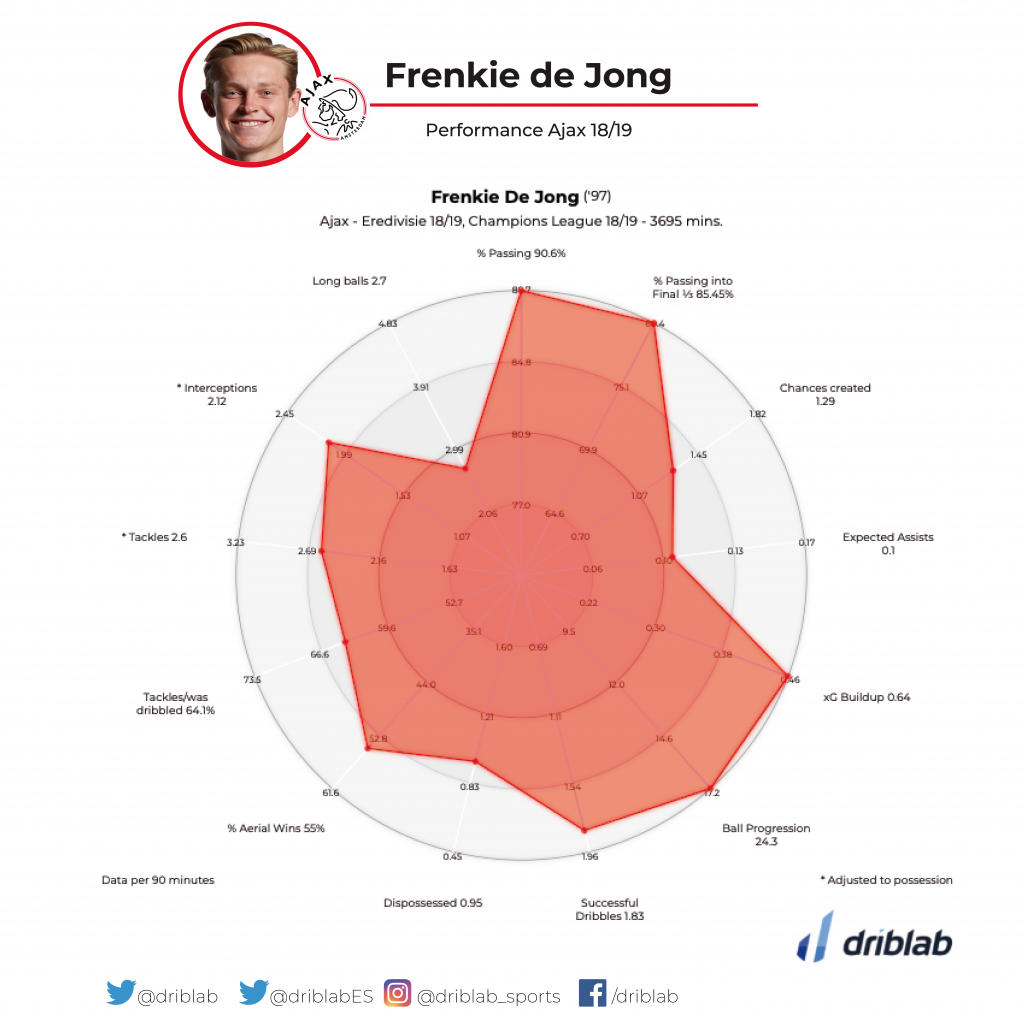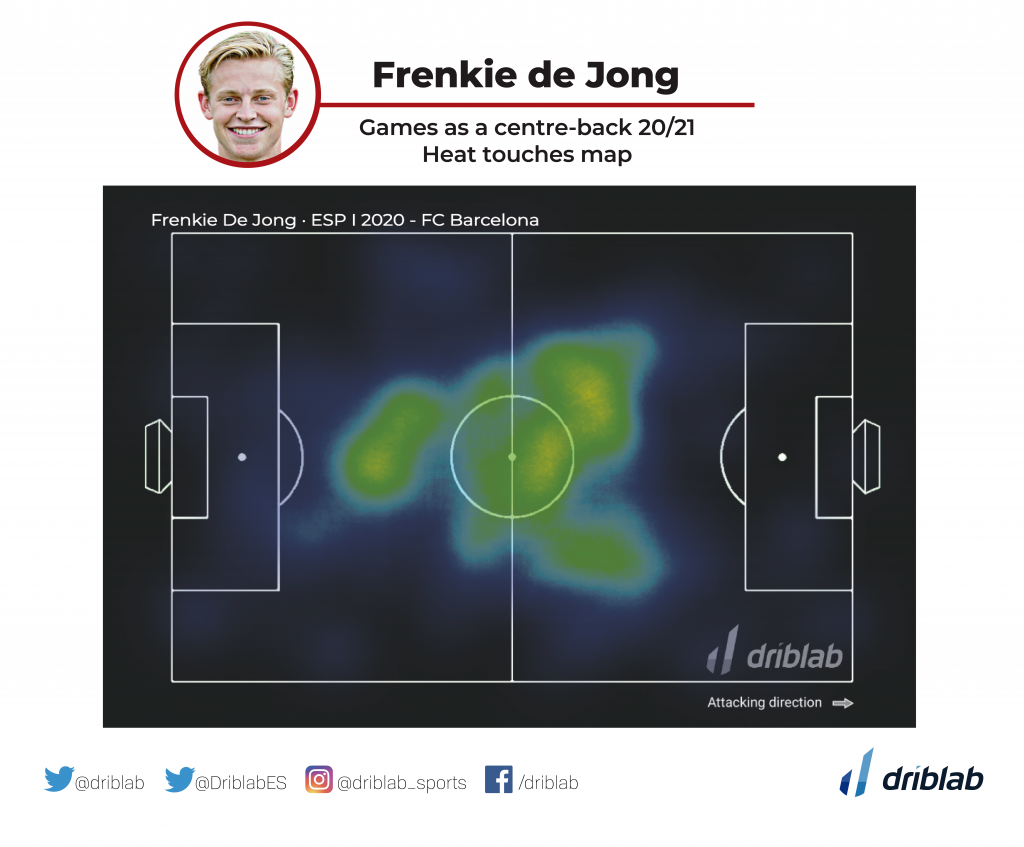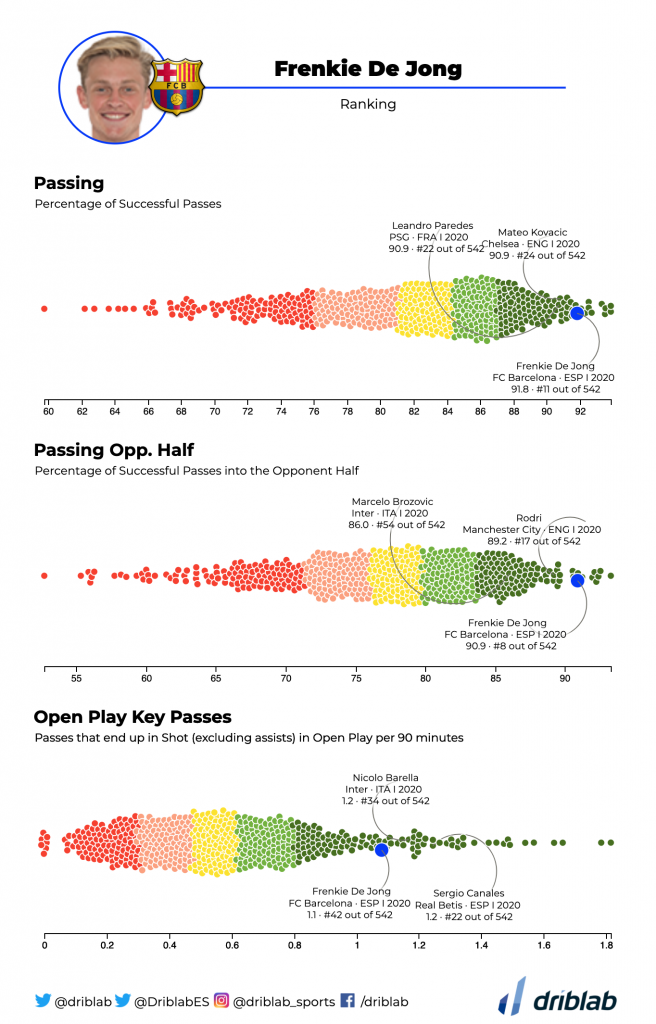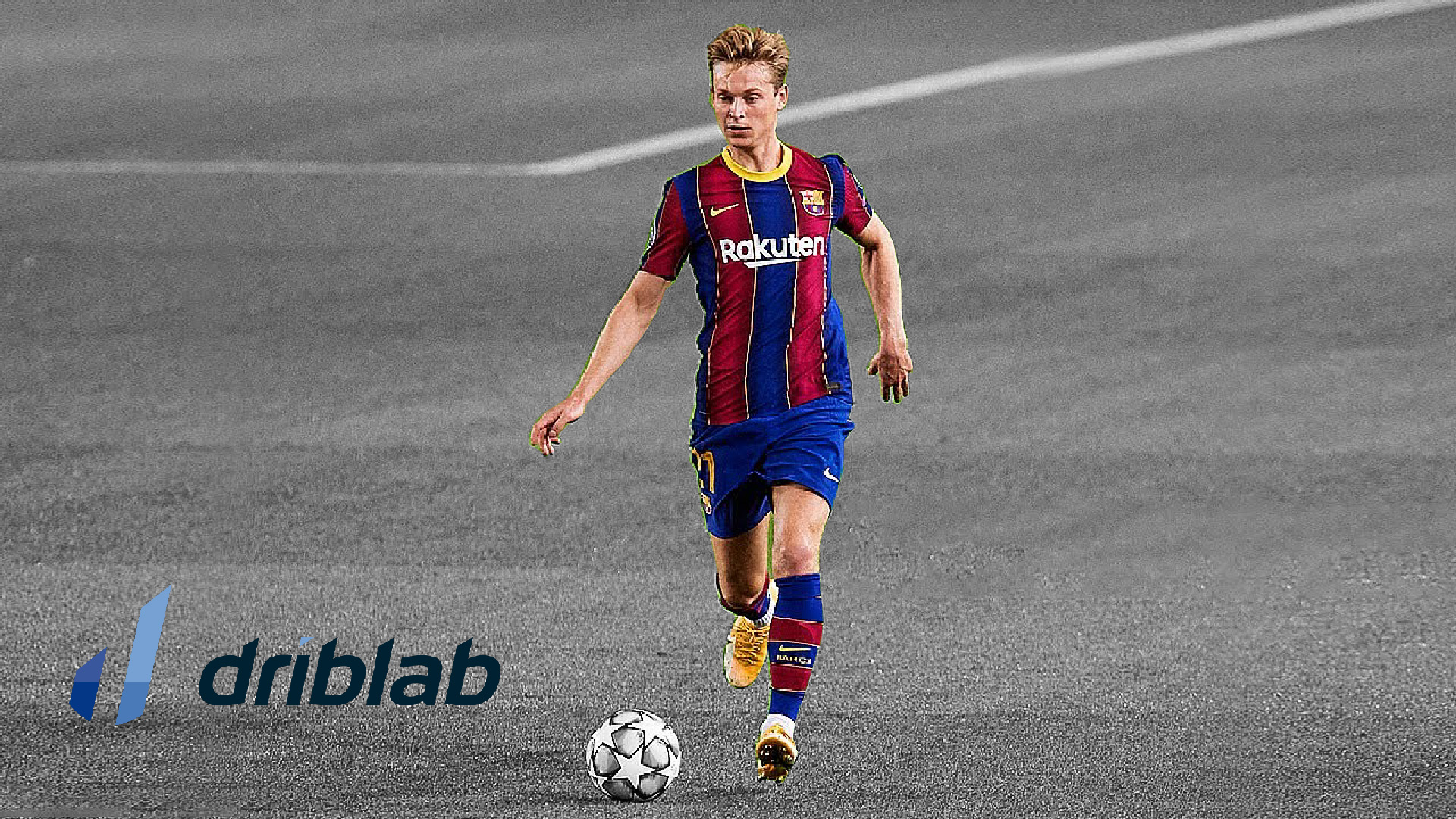Frenkie de Jong’s second season at FC Barcelona is, in some ways, a potential turning point in the future of the Catalan team. Both in terms of the reality that has forced Koeman to change formation in three different phases of the season and in terms of imagining what the Dutchman guarantees as a midfielder who plays in all sorts of roles, Frenkie’s take-off is surely one of the biggest news for Barça in the 2020-2021 season.
To properly understand De Jong’s individual and collective impact this season, you have to understand who Frenkie was at Erik ten Hag’s Ajax (2018-19) and how he has performed both on his Barcelona debut and in this his second year. Driblab’s radars easily evidence the level and shape of his performance; the freedom and responsibility he had at Ajax, the one he had with Valverde and Setién in his first season and the feeling he has found with Koeman, who had already coached him in the Dutch national team, where he was the team leader.


To begin to delve deeper, it is interesting to highlight the figure of De Jong from two fundamental prisms, innate in the nature and talent of the player: his versatility to play in different positions and his arrival from the second line once he plays as a midfielder, stepping into the box and going deep in the absence of a pure centre-forward in this Barcelona team.
On the first point, we must differentiate between three phases of Koeman’s Barça season. In the first, Barcelona formed a 4-2-3-1 formation, with De Jong playing alongside Sergio Busquets. This formation became asymmetrical in attack, with Alba (full-back) and Dembélé (winger) being the outside men, with Sergi Roberto remaining as a third centre-back. This formation was used by Ronald Koeman for 15 matches from the start of the season until 19 December 2020, against Real Sociedad.
In this phase, De Jong was part of a two-man midfield, while the team added four attackers up front, using a tactic very much to Koeman’s liking, with space in attack and quick transitions. Longer, more vertical movements and deeper runs were beginning to be seen. However, although De Jong had more space to move and get forward, unlike Valverde and Setién’s 4-3-3, the Dutchman had to come back more often than he would have liked to help Sergio Busquets. Everything started to change from the aforementioned 19 December.
It was in Valladolid when Barça slowly began to belong to Frenkie de Jong. On 22 December, the Dutch coach used a 3-4-2-1 formation which, although he temporarily abandoned it for a 4-3-3 for eight consecutive matches, he would return to it on 6 March against Osasuna, never to abandon it for the rest of the season.
On the first point, we must differentiate between three phases of Koeman’s Barça season. In the first, Barcelona formed a 4-2-3-1 formation, with De Jong playing alongside Sergio Busquets. This formation became asymmetrical in attack, with Alba (full-back) and Dembélé (winger) being the outside men, with Sergi Roberto remaining as a third centre-back. This formation was used by Ronald Koeman for 15 matches from the start of the season until 19 December 2020, against Real Sociedad
In this phase, De Jong was part of a two-man midfield, while the team added four attackers up front, using a tactical scheme very much to Koeman’s liking, with space in attack and quick starts. Longer, more vertical movements and deeper runs were beginning to be seen. However, although De Jong had more space to move and get forward, unlike Valverde and Setién’s 4-3-3, the Dutchman had to come back more often than he would have liked to help Sergio Busquets. Everything started to change from the aforementioned 19 December.
It was in Valladolid when Barça slowly began to belong to Frenkie de Jong. On 22 December, the Dutch coach used a 3-4-2-1 formation which, although he temporarily abandoned it for a 4-3-3-3 for eight consecutive matches, he would return to it on 6 March against Osasuna, never to abandon it for the rest of the season. And it is in these two phases, first the 4-3-3 and above all the 3-4-2-1 or 3-5-2, that Frenkie de Jong turns these ideas into reality. Without him, Koeman might have had much more trouble filling all the roles he needed in the change of system.
On 6 March, against Osasuna, the date on which Koeman definitively enabled the 3-4-2-1 or 3-5-2, a competitive period in which De Jong emerged as the most flexible and multifunctional player in the team. First, for four consecutive games, De Jong plays as a central defender, but his heat map is more that of a libero, missing in today’s football.

Switching back to midfield from the game against Real Madrid, De Jong has not only started to offer his best version for the future, with the confidence to feel very important, but has also completed his season with a version close to a total midfielder, who seems to have no fixed position and who ends up in the box like a striker. While the emergence of Pedri has been joining Messi and Busquets for short passes, De Jong has been flying free on the pitch after confirming that Barça have three (or more) different players within the number 21.

We are Driblab, a consultancy specialized in the statistical analysis of players and teams; our work is focused on advising and minimizing risk in professional football decision-making in areas related to talent detection and footballer evaluations. Our database has more than 180,000 players from more than 180 competitions, covering information from all over the world. Here you can learn more about how we work and what we offer.














